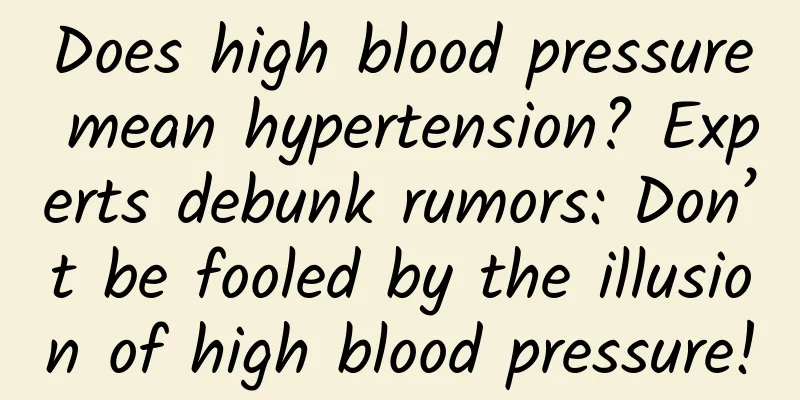Asteroids are "eyeing" the Earth! How can humans defend against "unexpected disasters"?

|
The risk of asteroid impact is a major threat facing humanity in the long term, and it concerns global safety and the survival of civilization. Monitoring and early warning is the first step in planetary defense, with a huge mission and a major technical challenge. An artist's impression of an asteroid collision A threat too big to ignore There are many asteroids in the solar system, ranging in size from a few meters to hundreds of kilometers, with various shapes, flying in orbit around the sun. Most asteroids are distributed in the asteroid belt between the orbits of Mars and Jupiter and the Kuiper belt outside Neptune, but some asteroids are closer to the sun and the earth. Asteroid belt between Mars and Jupiter Spatial distribution of asteroids (green are asteroids that will not approach the Earth in the near future, red are near-Earth asteroids) The Earth, on which human beings depend for survival, faces many threats, of which asteroid impacts are the most serious, having caused more than 10 biological extinction events of varying degrees in history. Asteroids enter the Earth's atmosphere at extremely high speeds, forming high-temperature and high-pressure shock waves in the atmosphere. Small, loosely structured fragments will burn up; large, hard ones may pass through the atmosphere and hit the Earth's surface, releasing huge kinetic energy, causing forest fires, earthquakes, tsunamis and other catastrophic consequences. 65 million years ago, an asteroid with a diameter of 10 kilometers hit the earth, causing global forest fires, severe earthquakes and tsunamis. Dust and ash filled the sky, blocking the sunlight and causing the earth's temperature to drop by 16°C. The impact lasted for a million years, and 70% of the species on Earth, including dinosaurs, became extinct. Scientists speculate that the extinction of dinosaurs may have been caused by an asteroid impact Comic by Dave Coverly, from the comic "Speed Bump." Text: "I admit, this discovery does seem to confirm the asteroid impact theory that wiped out the dinosaurs." Generally, stony meteorites with a diameter greater than 60 meters or iron meteorites with a diameter greater than 20 meters can pass through the Earth's atmosphere. The larger the size and weight of an asteroid, the greater the damage it will cause when it hits the Earth. Internationally, the threat level of asteroids is measured by equivalent diameter and divided into five categories. The first type has an equivalent diameter of kilometers and can cause a global disaster, which occurs approximately once every 700,000 years. The dinosaur extinction disaster 65 million years ago occurred approximately once every 100 million years. The second type has an equivalent diameter of 140 meters, which can cause intercontinental disasters and occurs about once every 30,000 years. In July 2019, an asteroid named 2019OK passed by the Earth at a distance of 72,000 kilometers. It has a diameter of about 57 to 130 meters. If it hits the Earth, the explosion would be equivalent to 5,000 times the power of the Hiroshima atomic bomb. The third category is the 50-meter level, which can cause large-scale city-level disasters, about once every two thousand years. In June 1908, an asteroid with a diameter of 30 to 50 meters hit the earth and exploded over the Tunguska River in Siberia, Russia. The power was 1,000 times that of the Hiroshima atomic bomb, causing forest fires and burning more than 80 million trees within an area of 2,000 square kilometers. The fourth category is the 20-meter level, which can cause a town-level disaster about once every 200 years. In 2013, an asteroid with a diameter of about 17 meters passed through the atmosphere and exploded 90 kilometers above the Chelyabinsk region of Russia, injuring more than 1,600 people and damaging more than 1,000 houses. The fifth category is meter-level meteors, which occur every year. However, they are too small to pass through the atmosphere and most of them explode in the air and produce fireballs. The meteorite fragments scattered after the explosion may also cause casualties. Since 1988, an average of 2 fireball events have been recorded globally per month. Astronomy defines asteroids with a minimum distance of 0.3AU (1AU is the distance between the sun and the earth) as near-Earth asteroids. More than 30,000 of them have been discovered, some of which have orbits that intersect with the Earth's orbit and have the potential to collide with the Earth. Asteroids with a minimum distance of 0.05AU and a diameter greater than 140 meters are defined as threatening near-Earth asteroids, accounting for nearly one-tenth of the total. In addition, if an asteroid enters a certain distance from the Earth, it may be captured by the Earth's gravity, change its orbit, and hit the Earth. Their orbits are also affected by the gravitational perturbations of other large celestial bodies in the solar system and are constantly changing. Therefore, the asteroids that threaten the Earth are not constant, and the degree of threat often changes. Ground monitoring is the main The impact of a near-Earth asteroid on the Earth will trigger a huge disaster. It is an inevitable event and a major challenge that mankind has faced for a long time. With the advancement of science and technology, humans have gradually formed the ability to study and predict the risk of asteroid impacts. By building an asteroid monitoring system to detect and track dangerous asteroids, we can predict the time, location and degree of impact in advance, take effective measures to minimize the risk. Asteroid monitoring and early warning mainly involves three aspects of work. The first is the cataloging of near-Earth asteroids. New asteroids are discovered through space-based and ground-based monitoring equipment, and their orbits are determined and cataloged. The second is threat early warning. For asteroids that pose a certain threat in the catalog, precise tracking is carried out to obtain accurate orbital parameters and other information to assess the impact risk and degree of harm. The third is short-term forecasting. For asteroids that are about to pass by the Earth at a close distance and have a high probability of impact, precise tracking and measurement are carried out to continuously forecast the impact area. At present, the most mature and widely used monitoring and early warning equipment is the ground-based optical telescope, which detects comets, asteroids and variable stars and determines the position of asteroids by repeatedly observing the same sky at different times and comparing the changes in regional characteristics. In 1992, the United States launched the "Space Guardian Sky Survey" project and began to systematically monitor asteroid activities. The first to be put into operation was the Lincoln Near-Earth Asteroid Research Program, which includes two 1-meter and one 0.5-meter telescopes. In 2005, the U.S. Congress passed the Near-Earth Object Authorization Act, requiring NASA to record 90% of near-Earth objects with a diameter greater than 140 meters and a perihelion less than 1.3AU. The U.S. launched the construction of ground-based optical telescopes such as the Catalina Sky Survey System, the Pan-STARRS Project, the Discovery Channel Telescope, and the Large Integrated Survey Telescope to carry out asteroid monitoring and early warning. Catalina Sky Survey Telescope The Catalina Sky Survey System consists of three optical telescopes, including two wide-field survey telescopes with apertures of 1.5 meters and 0.7 meters for searching unknown asteroids, and a narrow-field telescope with an aperture of 1 meter for precise tracking and measurement. Once a dangerous asteroid that may hit the Earth is found, the system immediately switches to emergency mode and mobilizes the three telescopes to track and measure the dangerous asteroid to determine whether the target will hit the Earth. The Catalina Sky Survey has contributed more than half of the near-Earth asteroids discovered by humans. This unique "2+1" design enables the system to perform well in predicting the risk of asteroid impacts. To date, humans have successfully predicted asteroid impacts on Earth seven times, five of which were attributed to the Catalina Sky Survey. The Pan-STARRS program consists of an array of four 1.8-meter telescopes that simultaneously observe the same area of the sky, producing a resolution equivalent to that of a 3.6-meter telescope. Catalina and Pan-STARRS are the main forces of human ground-based asteroid monitoring and are the systems that have discovered the most near-Earth asteroids in the past 10 years. In 2022, a total of 3,182 near-Earth asteroids were discovered by various countries, with 1,291 discovered by the Catalina survey system and 1,263 discovered by the Pan-STARRS telescope, accounting for 80% of the total. Pan-STARRS The Discovery Channel Telescope is the fifth largest astronomical optical telescope in the United States, with a main mirror diameter of 4.2 meters and two imaging modes: visible light and infrared. The Large Integrated Survey Telescope is still under construction, located at the Ilpein Peak of the Parcón Mountains in northern Chile. The main mirror has a diameter of 8.36 meters, has a strong light-gathering ability and extremely high resolution, and a wide field of view. It can complete a full-sky observation every three days, which is equivalent to the workload of other telescopes for several years. After it is put into use, it will become the world's most powerful asteroid observation equipment. In addition, the United States has built two ground-based radar stations for planetary exploration, namely the Arecibo radio telescope and the Goldstone Solar System Radar. The radar transmits signals and receives echoes reflected by asteroids to conduct detailed detection of asteroid orbits, shapes, structures and material composition. Generally, it is used for near-term forecasting when an asteroid flies to 0.3AU from the Earth. Arecibo radio telescope Europe launched the "Space Situational Awareness" program in 2009, using the ground-based radars and optoelectronic equipment of each member state to monitor artificial celestial bodies, space debris and potentially threatening celestial bodies, and mobilizing 14 telescopes with apertures of 0.4 to 4.2 meters for near-Earth asteroid monitoring, early warning, in-orbit disposal and other research work. Russia uses the International Scientific Optical Detection Network, the Institute of Astronomy and the domestic "Mobile Astronomical System of Telescope Automatic Manipulators" to conduct near-Earth object searches and monitoring. After the Chelyabinsk incident, it accelerated the construction of a new 1.6-meter-diameter large-field survey telescope. Japan, South Korea and other countries have also built ground-based telescopes for near-Earth object searches and physical property research. Space-based monitoring is an important direction Ground-based optical telescopes have the advantages of large aperture, long observation distance, low construction and operation costs, and long life. They are currently the backbone equipment for asteroid monitoring, but they have some inherent defects that are difficult to overcome and cannot achieve full-sky, all-day monitoring and early warning. First, there is an observation blind spot on the sun side. During the day, due to the strong light, the shadows of asteroids are covered, and asteroids flying from the sun side cannot be observed. However, when these asteroids approach the earth, their brightness will increase rapidly, and they may soon fly into deep space or immediately hit the earth. In the Chelyabinsk incident in 2013, there was no warning before the asteroid impact. The 2019OK asteroid was observed one day in advance, when it was already very close to the earth, and it was very likely to be captured by gravity and hit the earth, causing serious damage. Second, the effective observation time is short and easily disturbed. Ground-based optical telescopes can only work at night and are easily disturbed by factors such as the atmosphere, moonlight scattering, and human near-Earth orbit space activities. Affected by the rotation of the Earth, the ground observation arc is discontinuous and it is impossible to track the target for a long time. In addition, due to the distribution of land and sea on the Earth, the ground-based telescope observation network is unevenly distributed, with few in the southern hemisphere, making it difficult to detect asteroids flying from this direction. Third, the means of observation are limited. The infrared band has the advantages of stronger observation capabilities for faint celestial bodies and richer spectral information for asteroids. Combined with optical observations, the albedo and size of asteroids can be obtained. However, due to the obstruction of the Earth's atmosphere, it is difficult to conduct infrared band observations of asteroids on the ground. In contrast, space-based platforms have the advantages of all-weather operation, large sky coverage, wide observation band, and accurate orbit prediction, which can effectively make up for the shortcomings of ground-based monitoring systems and become the current key development direction. Space-based platforms are usually deployed in sun-synchronous orbits, Venus-like orbits, and Lagrangian orbits. At present, there are few space-based platforms dedicated to asteroid monitoring, only Canada's Near-Earth Object Surveillance Satellite, and no monitoring network has been formed. However, various countries use space telescopes to carry out asteroid observation activities, which plays a good supplementary role, such as the United States' Wide-field Infrared Survey Explorer, the European Space Agency's "Gaia" probe, and Japan's "Hikari" satellite. Wide-field infrared detector The Hikari satellite was launched in 2006. It is an infrared spectrum space-based observation satellite developed by Japan, Europe and South Korea. It operates in a sun-synchronous orbit and conducts near-infrared, medium-wave and far-wave infrared observations of the entire sky. In more than five years in orbit, the satellite has discovered more than 500,000 asteroids in the solar system. The United States launched the Wide-field Infrared Explorer in 2009, which carries a 0.5-meter telescope, operates in the infrared band, and is in a 500-kilometer sun-synchronous orbit. The explorer discovered hundreds of near-Earth asteroids and comets from 2009 to 2011. In 2013, the mission was expanded and 34,000 new asteroids were discovered, including 135 near-Earth asteroids. The explorer has been in operation to this day and is one of the main international asteroid space-based observation platforms. The Gaia probe was launched in 2013. Its mission is to conduct high-precision observations of the positions, distances and movements of stars in the Milky Way. It operates at the Sun-Earth L2 point, has a better phase angle relationship with near-Earth asteroids approaching the Earth, and is an important supplement to the monitoring network. ESA's Gaia probe Canada launched the Near Earth Target Surveillance Satellite in 2013. It is the first satellite in the world dedicated to searching and monitoring near-Earth asteroids. Its main payload is a 15-centimeter reflecting telescope operating in an 800-kilometer near-Earth orbit. It has now ceased operation. Germany's AsteroidFinder satellite is also mainly responsible for detecting asteroids. Currently, the United States is developing a new generation of space-based infrared telescope NEOCam, which will work with other detectors to achieve the goal of discovering more than 90% of asteroids with a diameter greater than 140 meters. NEOCam is equipped with an infrared spectrum telescope and a wide-field camera in the thermal infrared spectrum. It is scheduled to be launched in 2028 and deployed at the Sun-Earth L1 point. During the mission cycle, 2/3 of the potential high-risk near-Earth asteroids will pass through the telescope's observation range, and the size of the asteroids can be accurately determined. The United States is developing a new generation of space-based infrared telescope NEOCam International cooperation to meet challenges There are many near-Earth asteroids, and the tasks of searching, discovering, tracking and monitoring are heavy and difficult, requiring global cooperation to improve observation efficiency and timeliness. The threat of asteroid impacts is closely related to all mankind, and it is an inevitable choice for all countries to carry out extensive international cooperation and jointly respond to risks. In July 1994, Comet Shoemaker-Levy 9 collided with Jupiter, marking the first time that humans directly observed a large-scale celestial collision. The following year, the United Nations held an international seminar on "Preventing Near-Earth Object Impacts on the Earth", clearly stating the potential threat of near-Earth asteroids to the Earth and proposing to strengthen monitoring and tracking capabilities. Artist's impression of Comet Shoemaker-Levy 9 impacting Jupiter In 2014, the United Nations Committee on the Peaceful Uses of Outer Space established the International Asteroid Warning Network and the Space Mission Planning Advisory Group. The former is responsible for the discovery, tracking, cataloging, and feature analysis of near-Earth asteroids, and organizes international joint observation activities from time to time to improve the accuracy of cataloging and warning of near-Earth objects and enhance the coordination and response capabilities of international joint observations. The latter is responsible for promoting technical research related to near-Earth asteroid defense. After years of development, countries have paid increasing attention to the risk of asteroid impacts, the scope of cooperation has continued to expand, and the monitoring and early warning network has gradually improved. At present, the United States has built a near-Earth asteroid monitoring network that is mainly ground-based and supplemented by space-based. It has the most complete structure, with 11 dedicated ground-based optical telescopes and other ground-based and space-based platforms. Every year, a large number of near-Earth asteroids are discovered, and a database is produced and published, providing 98% of the internationally shared asteroid catalog data, playing a key leading role. The European Space Agency established the Planetary Defense Office in 2013 to organize technical research on near-Earth asteroid monitoring, data processing, and on-orbit disposal. Russia established the Planetary Defense Center in 2002, and currently has 9 dedicated telescopes, which contributes important forces to asteroid monitoring and early warning. my country officially joined the International Asteroid Warning Network and the Space Mission Planning Advisory Group in February 2018. With the 1.04-meter telescope of the Purple Mountain Observatory as the backbone equipment, asteroid and comet observation research is systematically carried out. The Purple Mountain Observatory has become one of the influential stations in the International Asteroid Network, observing more than 1,300 near-Earth asteroids and discovering more than 30 new near-Earth asteroids. Many observatories such as Lijiang and Xinglong have the ability to observe asteroids, laying the foundation for the establishment of a near-Earth asteroid monitoring and early warning network in the future. Purple Mountain Observatory Near-Earth Object Detection Telescope As countries continue to build new observation equipment and conduct sky surveys, the near-Earth asteroid monitoring and early warning network has shifted from ground-based telescopes to a coordinated ground-based and space-based platform. The telescope aperture continues to increase, the field of view continues to expand, and the observation band changes from visible light to infrared, from a single band to multi-band integration, gradually forming a space-ground integrated and all-sky, all-day monitoring and early warning capability. Countries continue to discover new near-Earth asteroids. As of the end of 2022, the total number has reached 31,014, including more than 10,000 with a diameter greater than 140 meters, nearly 1,000 with a diameter greater than 1 kilometer, and more than 2,000 potentially dangerous asteroids. Humans have also acquired a certain ability to temporarily predict a large number of near-Earth asteroids that cannot be catalogued in the short term and may suddenly approach, and the number of successful early warnings of impacts is increasing. In 2008, astronomers used the Catalina Sky Survey to discover that asteroid 2008TC3 would hit the Earth 19 hours in advance and issued a forecast, achieving the first accurate prediction of an asteroid impact event. So far, humans have successfully predicted 7 times, with warning times ranging from 2 hours to 19 hours. A large asteroid or comet hits the Earth Asteroid monitoring still a long way to go Over the past decade, humans have made significant progress in monitoring, warning and defense of near-Earth asteroids, but there are still many dangerous asteroids that have not been observed. According to the formation and evolution model of small bodies in the solar system, the total number of near-Earth asteroids with an equivalent diameter of 10 to 140 meters is on the order of 1×105. For the part that has been observed so far, the cataloging completion rate of the equivalent diameter of the kilometer class is over 95%, but the cataloging completion rate of the 140-meter class is only about 40%, the cataloging completion rate of the 50-meter class is about 3%, and the cataloging completion rate of the 20-meter class is less than 1%. There are still a large number of asteroids with potential impact threats hidden in the dark and vast universe. The motion trajectories of these undiscovered asteroids are complex. Affected by the gravity of large planets and the space environment, their flight orbits are constantly changing, and long-term orbit prediction is very difficult. Humanity's measurement accuracy and prediction models for asteroids are not yet able to accurately predict the impact risk thousands or tens of thousands of years from now, so we must continue to develop monitoring and early warning capabilities. From a historical perspective, although asteroid impacts with an equivalent diameter of less than 10 meters occur frequently, the damage is relatively small. Asteroid impacts with an equivalent diameter of 20 to 140 meters are the magnitude that require special attention. They can cause damage at the town, large city, and even intercontinental levels. At the same time, there are so many of them that the probability of impact cannot be ignored. There is still a long way to go in monitoring and early warning of near-Earth asteroids. Under the existing ground-based and space-based monitoring system, humans have observed the vast majority of near-Earth asteroids with a diameter of more than 1 km. This year, the Large Integrated Survey Telescope in the United States will be officially put into operation. According to simulation calculation results, it is expected that 90% of near-Earth asteroids with a diameter of more than 140 meters will be cataloged within 12 years. However, for targets with a diameter of less than 140 meters, ground-based telescopes cannot complete systematic detection within a reasonable period of time. It is necessary to deploy a space-based monitoring network to gradually form an integrated monitoring and early warning capability with long-term observations of ground-based telescopes as the main network and targeted surveys of space-based telescopes as the auxiliary. In 2022, my country announced that it would build an asteroid defense system to contribute to human response to extraterrestrial threats. In terms of asteroid monitoring and early warning, the "Mozi" large-field survey telescope was completed in Lenghu, Qinghai in 2023. Lenghu, Qinghai has excellent astronomical optical observation conditions, with many clear nights, little light pollution, and good seeing. It is known as the best optical observatory site in Eurasia. The "Mozi" main mirror has an aperture of about 2.5 meters and is equipped with a 765-million-pixel large-surface prime camera. The site of the Saishiteng Mountain Observatory and the dome of the Large Field Survey Telescope under construction in Lenghu Town, Haixi Prefecture, Qinghai Province At the same time, the second phase of the "China Compound Eye" project is under construction on Zhongzhou Island, Yunyang County, Chongqing, and plans to build 25 30-meter aperture radars by 2025. The "China Compound Eye" is my country's first large-scale distributed aperture deep space detection radar. After it is fully built, the detection distance can reach 150 million kilometers, enabling the observation of asteroids and terrestrial planets hundreds of millions of kilometers away, expanding the boundaries of human deep space observation, and providing important support for my country's near-Earth asteroid impact defense and planetary science research. The "Chinese Compound Eye" under construction Based on the concept of building a community with a shared future for mankind, my country has actively responded to the risk of near-Earth asteroid impacts together with the international community, participated deeply, and taken the initiative to contribute China's strength to the peaceful use of space, protecting human safety, and enhancing human well-being. With the continuous development of science and technology and the joint response of countries around the world, mankind will eventually be able to overcome dangers and effectively protect its own safety. |
>>: Many people are wrong! Garlic scapes vs. garlic sprouts, which one is right?
Recommend
It can save lives at critical moments, and disaster prevention emergency kits also have national standards!
It can save lives at critical moments, and disast...
Luckin Coffee’s PR is quite self-congratulatory…
In China's Internet public relations circle, ...
How did Nobuyuki Idei push Sony into the abyss of decline?
Undoubtedly, Sony has declined, or it can be said...
How to make your product spread wildly?
Generally, marketing will plan a series of activi...
Sailing east six times? This is Jianzhen's voyage eastward
Sailing east six times? This is Jianzhen's vo...
Where is the most brilliant starry sky? China's large optical observatory is located on the Qinghai-Tibet Plateau
Looking up at the stars is the oldest human behav...
Is Baidu Netdisk Youth Edition really unlimited in speed? Test results tell you the answer
[[441500]] Baidu Netdisk Youth Edition is here! I...
How to plan an efficient marketing operation plan?
Based on my own experience, I shared how the mobi...
Did you know that tar is more dangerous than nicotine?
According to statistics, the current number of sm...
A practical guide to operating Douyin accounts in the K12 education industry
The Chinese proverb "It is easy to go from f...
How much is the corn subsidy per acre in 2022? When exactly will it be distributed? Attached are the latest policies from various places!
Corn is one of the main food crops in my country....
Big Bear and Little Bear are fighting? Is there no room for two bears in one mountain?
Recently, the fight between two Asian black bears...
How to promote products with a monthly budget of less than 100,000?
I want to tell you something truthful today. I ho...
The 2023 Breakthrough Prize in Science was announced, and they won the prize for discovering the cause of "narcolepsy"
On September 22, the 2023 Breakthrough Prize was ...
Is it true that dogs can see all the colors in Bluey?
I heard that dogs all over the world are obsessed...




![[Popular Science of Chinese Military Technology] Behind the first explosion in space, why did the incredibly powerful space nuclear explosion fade out of the historical stage?](/upload/images/67f23331b0174.webp)




